Overview
This article highlights the essential features that significantly enhance emergency incident reporting systems. The integration of technologies such as GIS, AI, and mobile compatibility is crucial. These advancements not only improve situational awareness but also facilitate real-time data collection and enhance user accessibility. The result is a more efficient and effective response during emergencies, underscoring the necessity of adopting these technologies in modern reporting systems.
Introduction
In a world where timely and accurate incident reporting can mean the difference between safety and disaster, the integration of advanced technologies is revolutionizing how organizations respond to emergencies. By harnessing the power of Geographic Information Systems (GIS) and artificial intelligence, companies are enhancing their situational awareness and streamlining their reporting processes. This article delves into the transformative impact of these innovations.
How are user-friendly interfaces, real-time data collection, mobile compatibility, and customizable reporting templates reshaping incident management? With a focus on collaboration, compliance, and continuous training, it becomes clear that leveraging these tools not only improves operational efficiency but also fosters a culture of safety and accountability in various industries.
Harbinger Land: Advanced GIS and AI-Powered Title Research for Incident Reporting
Harbinger Land employs advanced Geographic Information Systems (GIS) and AI-driven technologies, fundamentally transforming event reporting systems. By spatially visualizing event data, organizations enhance situational awareness—an essential factor for swift decision-making in emergencies. The integration of AI optimizes data collection and analysis, ensuring that reports are not only accurate but also timely—critical components for effective event management.
Current data indicates that organizations utilizing GIS technology in event documentation have seen a marked improvement in response times and accuracy, with a Poisson z-score value below -1 signifying a reduction in occurrence levels. Furthermore, advancements in multi-view ensemble learning classifiers, which integrate diverse data perspectives to boost predictive accuracy, showcase remarkable predictive capabilities, underscoring AI's potential to enhance precision and efficiency in event documentation.
Industry leaders advocate for the adoption of these technologies, highlighting their transformative effects on emergency incident reporting systems and operational effectiveness. As Gianmarco Di Palma, a Ph.D. student, observes, 'Collaboration with regulatory bodies is essential to develop guidelines that support the safe and efficient use of AI technologies in everyday clinical practice.
User-Friendly Interface: Enhancing Accessibility in Incident Reporting Systems
An intuitive interface is essential for event documentation platforms, as it allows users to navigate the software with ease and log occurrences swiftly. Features such as clear navigation, straightforward forms, and responsive design significantly diminish the time required to submit reports. This accessibility ensures that even non-technical users can engage in event documentation, thereby enhancing overall data collection initiatives.
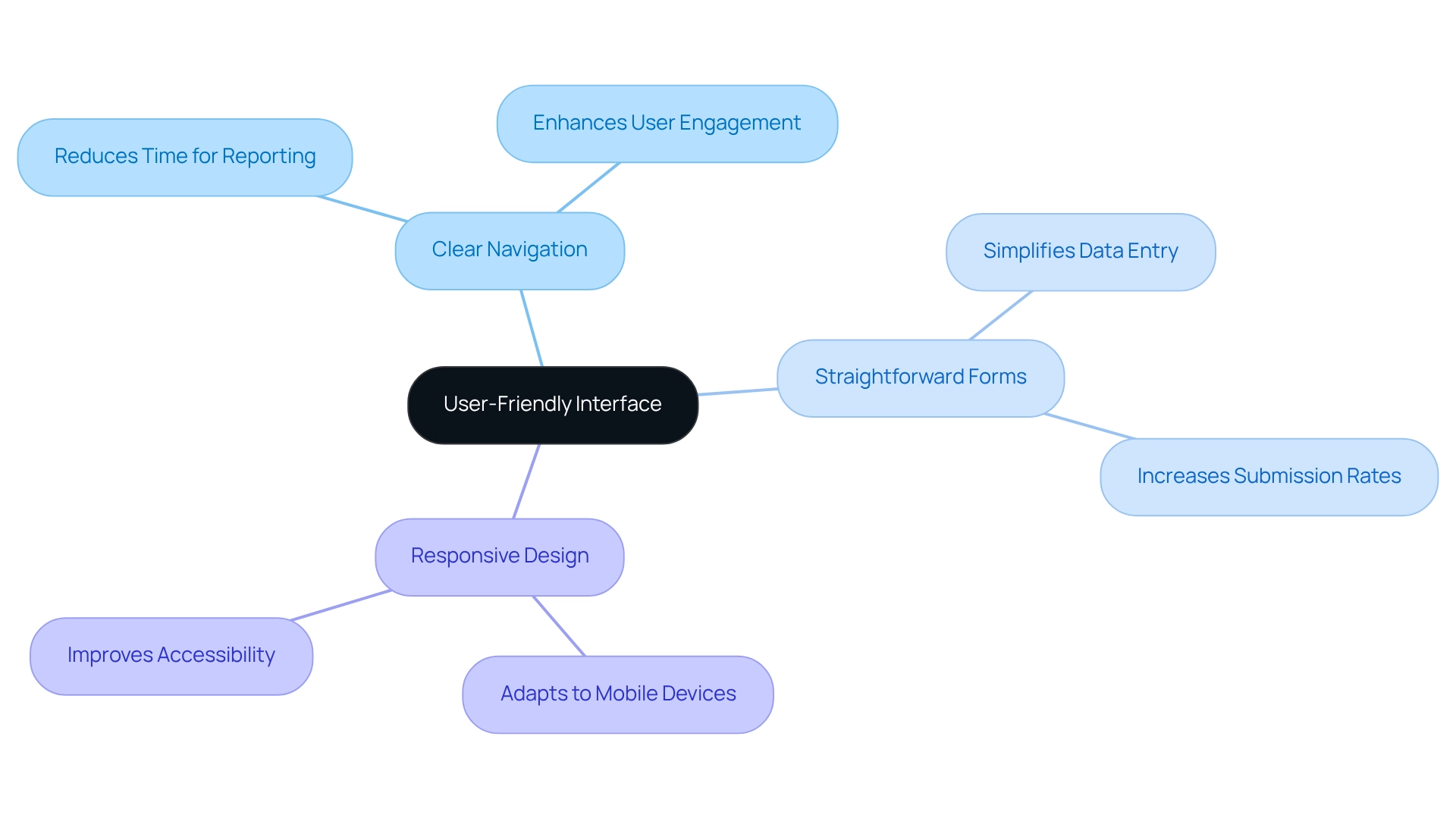
Real-Time Data Collection: Ensuring Timely Responses in Emergency Situations
Real-time data gathering features in emergency incident reporting systems are essential for enabling organizations to respond swiftly to crises. By leveraging mobile applications and cloud-based solutions, responders can instantly capture and disseminate incident details. This promptness not only facilitates faster evaluations but also enhances resource distribution, significantly boosting the overall efficiency of crisis responses.
Statistics reveal that 75% of urgent services utilizing IoT technologies report improved inter-agency communication, underscoring the critical role of real-time data in streamlining operations. Current trends indicate an increasing reliance on mobile and cloud solutions, which provide the flexibility and accessibility required for effective emergency incident reporting systems.
As communities face escalating vulnerabilities, particularly highlighted by recent data tools in regions such as Puerto Rico, the ability to gather and assess real-time information becomes increasingly vital in ensuring prompt and efficient crisis responses.
As Stephen Strader, PhD, emphasizes, local crisis managers possess invaluable knowledge about their communities, which is crucial for effective disaster response. Their understanding of local populations enhances the application of real-time data, ensuring that responses are tailored to the unique needs of each area.
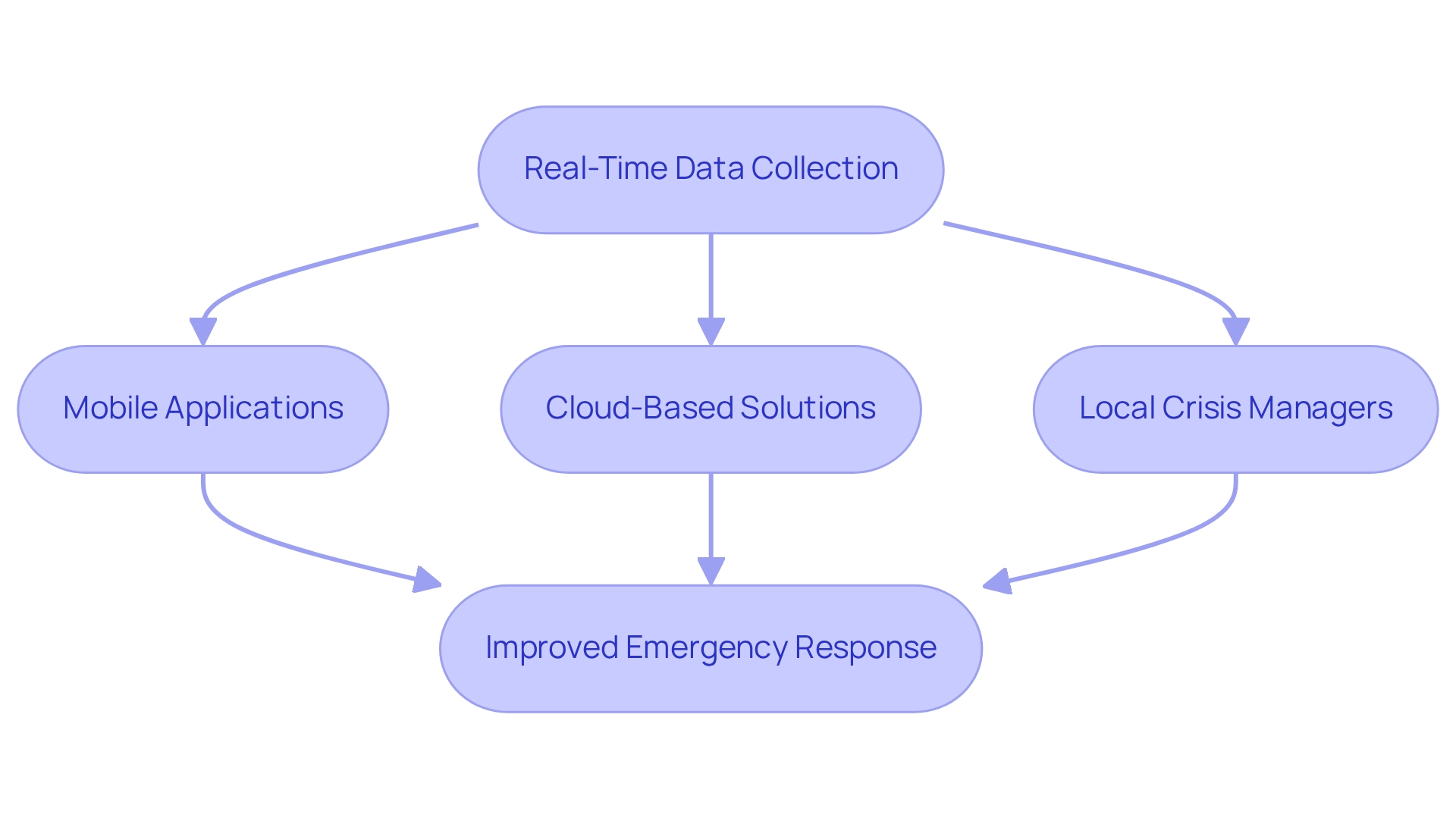
Mobile Compatibility: Facilitating Incident Reporting on the Go
Mobile compatibility revolutionizes emergency incident reporting systems by empowering users to submit incidents directly from smartphones or tablets. This capability is particularly beneficial for field personnel who often lack access to desktop computers in emergencies. Mobile applications can incorporate essential features such as:
- GPS tagging
- Photo uploads
- Voice recording
thereby enhancing the efficiency and completeness of the documentation process. Given that the user base of smartphones has doubled since 2016, organizations that neglect to implement mobile solutions like 1st Reporting risk falling behind in contemporary documentation practices. As Sheryl Dajia aptly observes, "Those marketers who create a full mobile experience for their consumers... are really experiencing the power of mobile along the purchase funnel."
A notable example is the Sharjah Municipality, which successfully deployed a hybrid mobile application that facilitated public feedback and issue documentation, significantly improving performance through real-time interaction and prompt resolution of concerns. As companies increasingly adapt to mobile and leverage new technologies, the benefits of mobile compatibility in event management tools become clear, especially for emergency incident reporting systems, which enhance accessibility, improve data gathering, and promote a more agile approach to emergency handling—elements that are crucial for effective event resolution.

Analytics Tools: Leveraging Data for Improved Emergency Response
Analytics tools integrated into emergency incident reporting systems empower organizations to scrutinize data trends over time. By analyzing past incidents, organizations can uncover patterns, evaluate response effectiveness, and devise strategies to mitigate future risks. This data-centric approach enhances preparedness and can lead to significant improvements in response protocols. Data analysis unveils hidden trends that impact service delivery, underscoring the transformative potential of analytics tools in crisis management.
Furthermore, the incorporation of real-time weather forecasts and environmental sensor data is vital for early warning and disaster preparedness. As Warren Davison noted, 'The good news is regardless of whether GIS staff within your organization maintain this content, or it comes from an external source, you can easily add it to Insights and use it.'
In summary, leveraging analytics tools within emergency incident reporting systems represents a transformative strategy that can yield improved outcomes in crisis management.
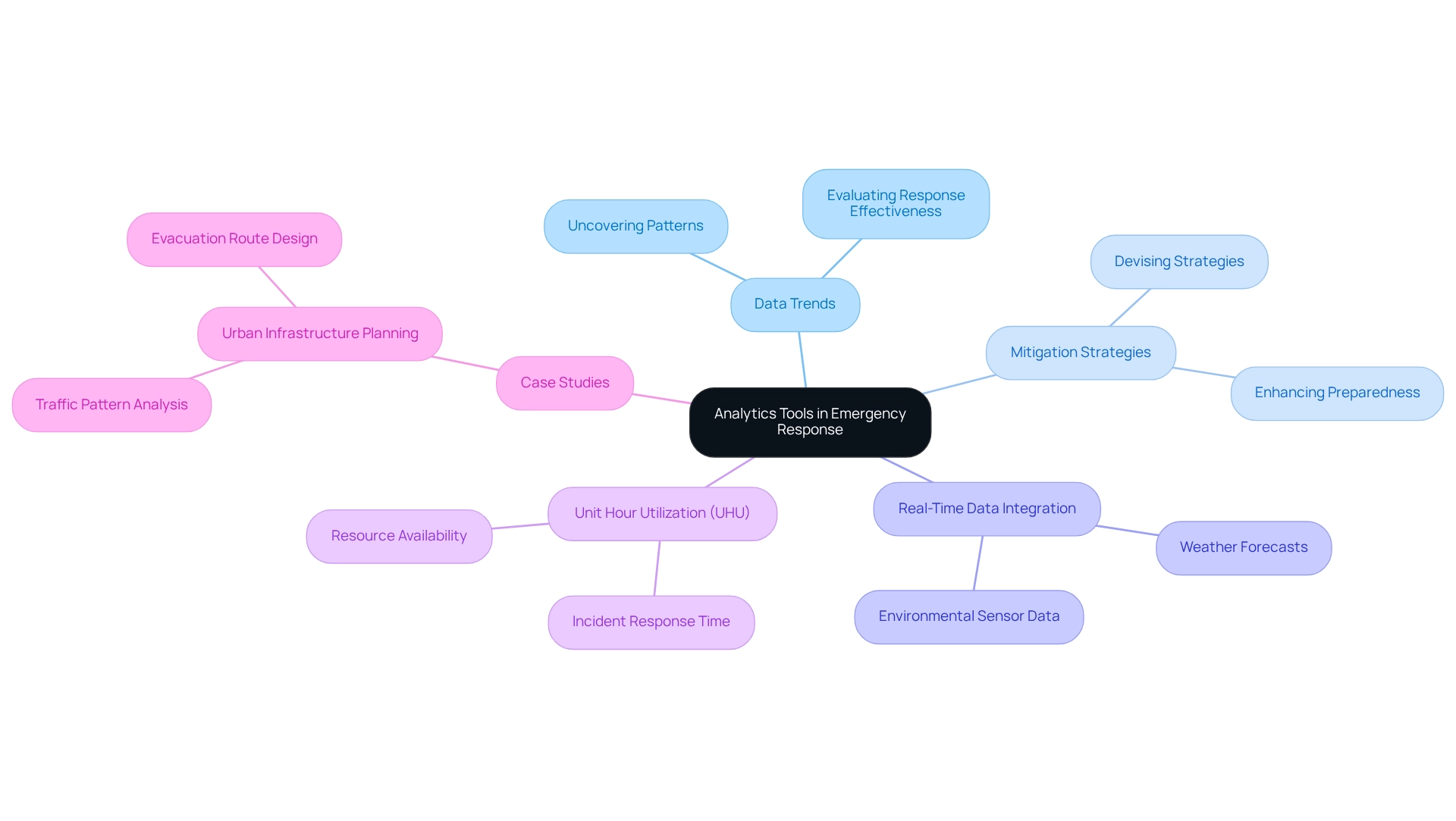
Customizable Reporting Templates: Tailoring Incident Reports to Organizational Needs
Customizable reporting templates in emergency incident reporting systems empower organizations to tailor the information collected to their specific needs. This flexibility is essential, as the nature of events and the data required can vary significantly across sectors. By allowing users to modify templates, organizations can enhance the precision and relevance of their reports generated by emergency incident reporting systems. A well-structured report should encompass crucial information such as the date, time, location, and the name of the person reporting, which are vital for comprehensive analysis and response.
Recent advancements in the field underscore the importance of customized event documentation, particularly in the context of emergency incident reporting systems. In 2025, the focus on adaptable documentation templates has gained traction, with organizations recognizing their role in improving data precision and the efficiency of emergency incident reporting systems. A case study featuring MedTrainer illustrates this point; their platform facilitates thorough filtering and analysis of occurrences, enabling healthcare organizations to identify trends and implement essential safety measures effectively.
Moreover, expert insights affirm that tailored incident reports generated by emergency incident reporting systems are not merely beneficial but essential across various industries. According to Expeditors and Production Services (EPS), "As specialists in logistics personnel services and other tailored solutions for oil and gas operators, we assist our clients in enhancing documentation processes and utilizing data to establish a safer workplace." By employing adaptable templates, organizations can ensure that their documentation processes align with specific operational requirements, ultimately yielding improved safety and compliance outcomes. As sectors continue to advance, the ability to adjust event documentation methods will remain a critical component in ensuring workplace safety and operational effectiveness.
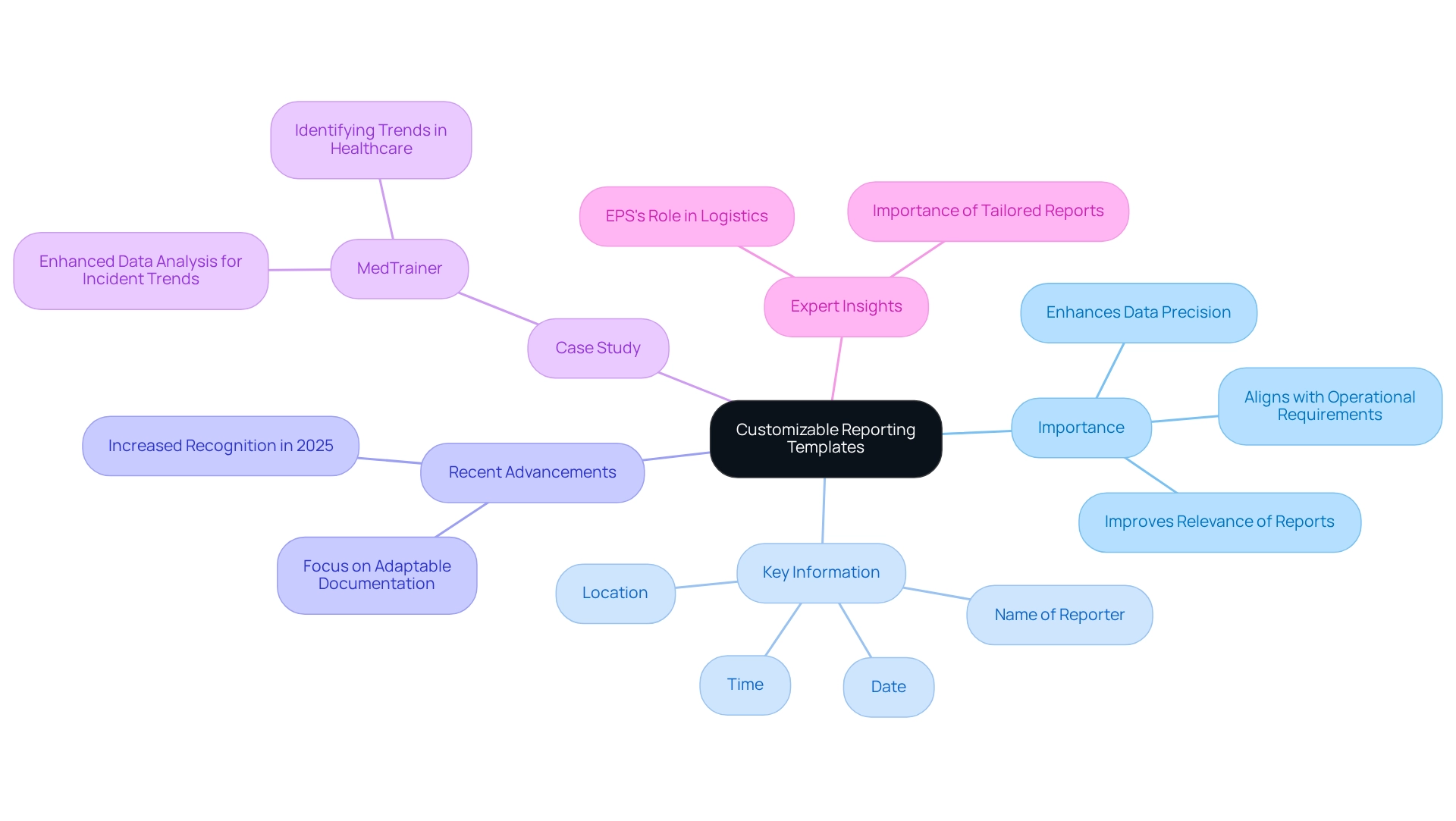
Secure Data Storage: Protecting Sensitive Information in Incident Reporting
Reliable data storage options are paramount for event documentation frameworks, as they protect confidential information from unauthorized access and breaches. Implementing encryption, access controls, and regular security audits is crucial to safeguarding data integrity. Organizations must ensure compliance with relevant regulations, such as HIPAA or GDPR, to maintain trust and protect sensitive information. This commitment not only enhances security but also reinforces the organization's credibility in handling sensitive data.

Multi-User Access: Enhancing Collaboration in Emergency Incident Reporting
Multi-user access in reporting systems is essential for fostering collaboration among diverse stakeholders, including responders, management, and support personnel. This capability not only facilitates real-time updates but also ensures seamless communication, keeping all parties informed and engaged in incident management efforts. Improved teamwork leads to more coordinated reactions and maximizes resource distribution during crises.
Statistics indicate that organizations utilizing multi-user access experience a significant enhancement in response times and overall efficiency in crisis management. For example, crisis management software should be ISO 27001 certified and comply with GDPR, safeguarding sensitive information while enabling effective collaboration.
Furthermore, case studies illustrate that organizations implementing these frameworks have successfully navigated complex crises by leveraging their teams' collective knowledge, even when faced with execution challenges. Recent news highlights that consistent training and exercises are crucial for familiarizing employees with the crisis management strategy, further emphasizing the importance of multi-user access in event documentation platforms.
As emergency management evolves, the critical role of multi-user access in emergency incident reporting systems remains paramount, establishing it as an indispensable feature for any organization aiming to enhance its emergency response capabilities.
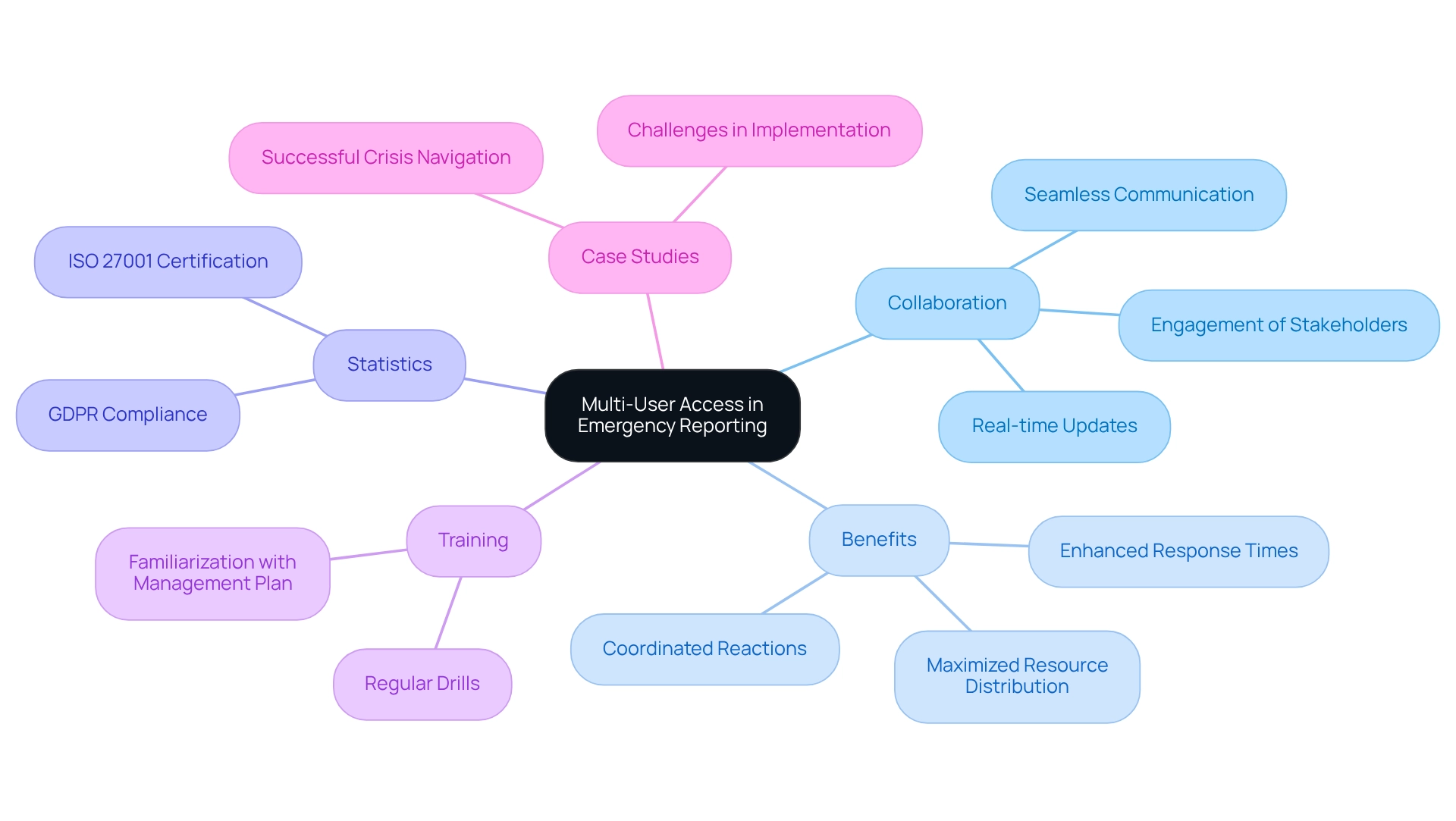
Compliance with Legal Standards: Ensuring Accountability in Incident Reporting
Adhering to legal standards in event documentation is crucial for fostering accountability and transparency within organizations. Compliance with regulations such as OSHA guidelines not only shields the organization from legal repercussions but also bolsters the credibility of its event documentation systems.
For instance, a recent document revealed that nearly 90% of imminent threat notifications were validated, underscoring the necessity for effective training and instilling confidence in communication systems. Furthermore, statistics demonstrate a significant decline in worker injuries and illnesses, from 10.9 occurrences per 100 workers in 1972 to just 2.4 per 100 in 2023, showcasing the positive impact of stringent compliance measures.
Organizations adhering to OSHA standards in their documentation practices enhance their operational integrity while promoting a safer workplace environment. As compliance officers increasingly dedicate 1 to 7 hours weekly to monitor regulatory developments, the integration of advanced tools can streamline these processes, enabling businesses to prioritize customer service while effectively managing compliance.
Almost 90% of leaders express enthusiasm for the incorporation of AI tools from suppliers of risk and compliance solutions, which can further refine event documentation frameworks. Ultimately, establishing a robust mechanism for documenting occurrences that aligns with legal standards is vital for maintaining accountability and ensuring the safety of all stakeholders, particularly in the realms of land acquisition and emergency incident reporting systems.
Training and Support: Maximizing the Effectiveness of Incident Reporting Systems
Education and assistance are vital for enhancing emergency incident reporting systems. Comprehensive training courses equip users with the essential skills required to manage the platform effectively and document occurrences accurately. Studies indicate that organizations with robust training programs experience a significant increase in user confidence and operational effectiveness, resulting in improved incident management outcomes.
For instance, an active safety culture, as highlighted in the case study 'Creating a Proactive Safety Culture,' promotes near-miss documentation, enabling organizations to identify vulnerabilities in their safety frameworks and prevent future incidents. Continuous support mechanisms, such as help desks and detailed user manuals, further bolster this confidence, ensuring that users can depend on the system during critical moments.
By 2025, the emphasis on training for event management software has become increasingly evident, with organizations recognizing that empowering employees fosters an environment of trust and safety. Effective training programs not only enhance user skills but also yield measurable improvements in occurrence metrics, illustrating the clear link between training and enhanced safety outcomes within emergency incident reporting systems.
For Directors of Land Acquisition, the implementation of effective emergency incident reporting systems can significantly influence safety protocols and streamline land acquisition processes in energy and infrastructure projects.

Conclusion
The integration of advanced technologies, such as Geographic Information Systems (GIS) and artificial intelligence, is fundamentally transforming incident reporting systems. This transformation enhances both situational awareness and operational efficiency. By utilizing real-time data collection, user-friendly interfaces, and mobile compatibility, organizations can respond to emergencies more swiftly and effectively. The ability to customize reporting templates tailors incident management to meet specific organizational needs, ensuring that reports are relevant and accurate.
Moreover, the importance of analytics tools cannot be understated; they provide valuable insights into historical trends, enabling organizations to prepare better for future incidents. Secure data storage solutions and compliance with legal standards bolster the integrity of these systems, fostering trust among stakeholders and promoting accountability. The collaborative nature of multi-user access enhances communication and resource allocation during emergencies, while comprehensive training and support maximize the effectiveness of incident reporting systems.
In an era where safety and efficiency are paramount, embracing these technological advancements is not just beneficial but essential. Organizations that prioritize these innovations will not only improve their incident management capabilities but also cultivate a culture of safety and accountability. This commitment ultimately leads to better outcomes in emergency situations. As the landscape of incident reporting continues to evolve, the dedication to leveraging these tools will be critical in navigating the complexities of modern emergency management.
Frequently Asked Questions
How does Harbinger Land utilize GIS and AI technologies in event reporting?
Harbinger Land employs advanced Geographic Information Systems (GIS) and AI-driven technologies to enhance event reporting systems by spatially visualizing event data, which improves situational awareness and aids in swift decision-making during emergencies.
What benefits do organizations experience by using GIS technology in event documentation?
Organizations utilizing GIS technology have reported improvements in response times and accuracy in event documentation, indicated by a Poisson z-score value below -1, which signifies a reduction in occurrence levels.
What is the role of multi-view ensemble learning classifiers in event documentation?
Multi-view ensemble learning classifiers integrate diverse data perspectives to enhance predictive accuracy, demonstrating AI's potential to improve precision and efficiency in event documentation.
Why is collaboration with regulatory bodies important in the context of AI technologies?
Collaboration with regulatory bodies is essential to develop guidelines that support the safe and efficient use of AI technologies in everyday clinical practice, as noted by industry experts.
What features make an event documentation platform user-friendly?
A user-friendly event documentation platform includes clear navigation, straightforward forms, and responsive design, which significantly reduce the time needed to submit reports and make it accessible for non-technical users.
How does real-time data gathering improve emergency incident reporting?
Real-time data gathering enables organizations to respond swiftly to crises by allowing responders to instantly capture and disseminate incident details through mobile applications and cloud-based solutions, enhancing overall efficiency in crisis responses.
What impact does IoT technology have on urgent services?
Statistics show that 75% of urgent services utilizing IoT technologies report improved inter-agency communication, highlighting the critical role of real-time data in streamlining operations.
Why is local knowledge important for crisis management?
Local crisis managers possess invaluable knowledge about their communities, which is crucial for effective disaster response. Their understanding enhances the application of real-time data to ensure responses are tailored to the unique needs of each area.




